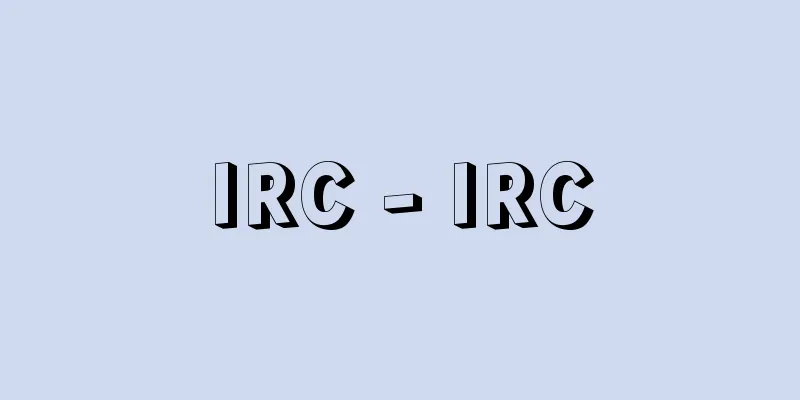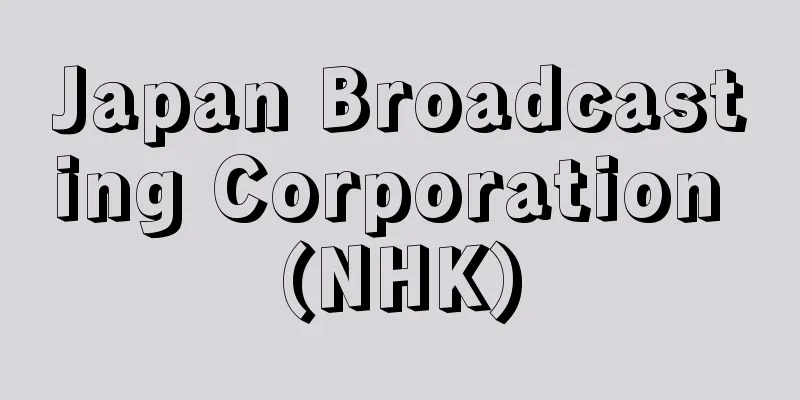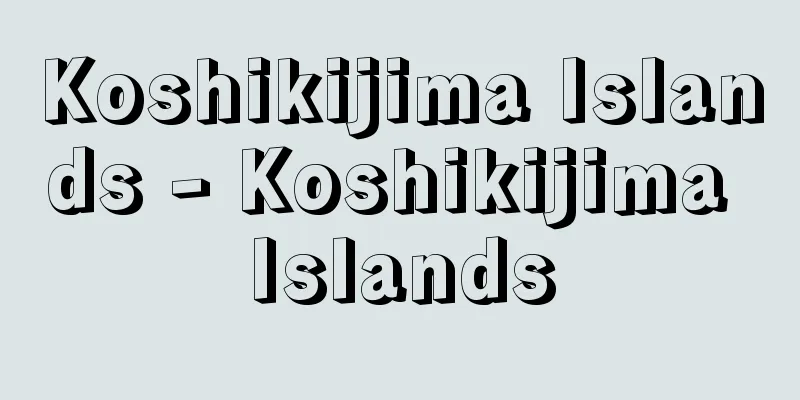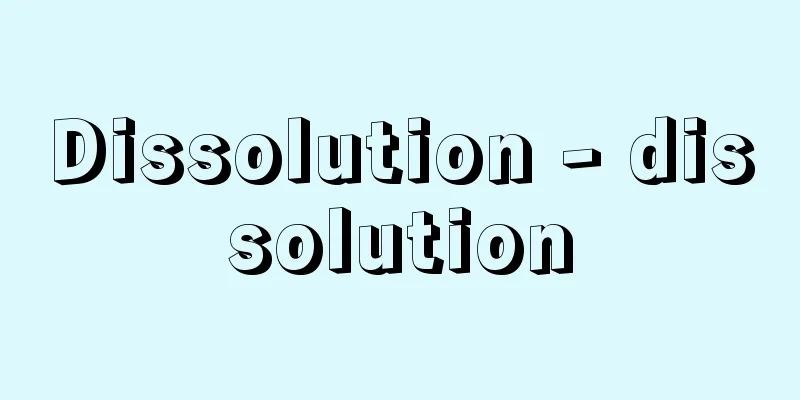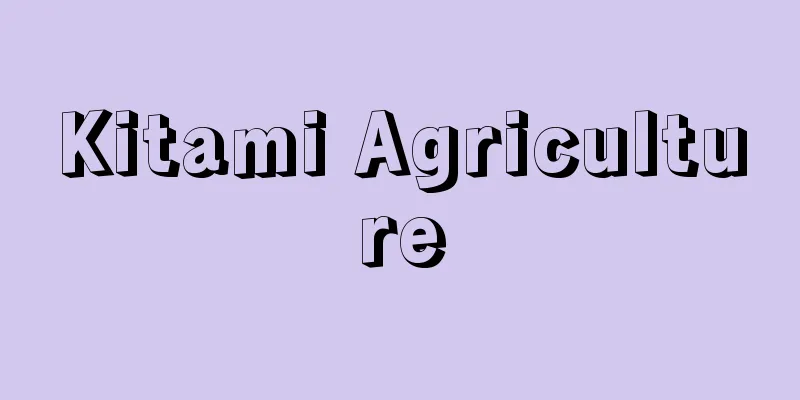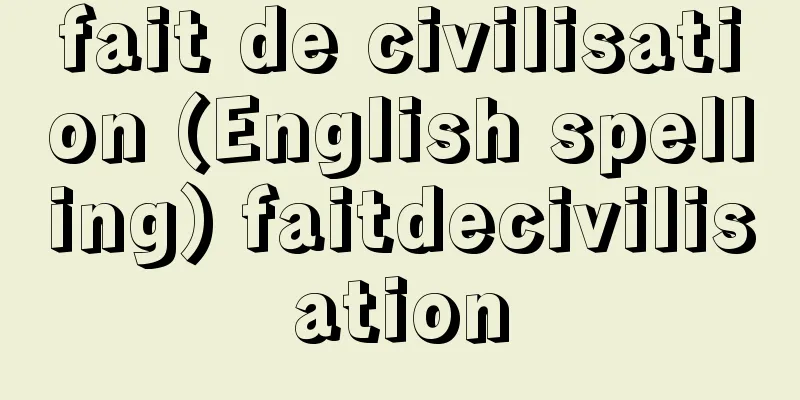Industrial waste - Industrial waste
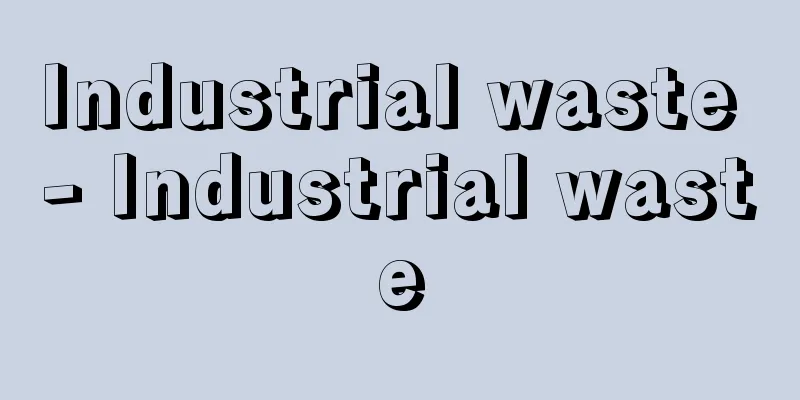
|
Waste generated as a result of industrial activities. It is also abbreviated as "industrial waste." The generation of large amounts of hazardous waste generated by industrial activities has caused major social problems such as the destruction of human health and the living environment. In Japan, too, the disposal of industrial waste has become a serious problem with the rapid industrialization of the 1960s. Dioxins generated by the incineration of industrial waste have led to air pollution, and the dumping and disposal of waste in the ocean has exacerbated soil and water pollution. In response, the Waste Disposal and Cleaning Law (Waste Disposal Law) was enacted in 1970 (Showa 45) to protect the living environment and address the reduction of waste discharge, recycling, and proper disposal. This law has been revised continuously since then, until 2011 (Heisei 23), with the aim of ensuring its completeness. In 1991, the law was amended to deal with the increase in waste and the increase in waste that is difficult to properly dispose of. In 1997, the law promoted waste reduction and strengthened penalties for illegal dumping, and in 2000, the law was amended to more strictly pursue the responsibility of waste generators. It also clarified the content of industrial waste and the parties responsible for disposal, distinguishing it from general waste, and stipulated the method of disposal of the waste. In particular, Article 12 stipulates that industrial waste is 20 types of waste generated in business activities such as factories and imported waste. The 20 types of waste generated from business activities are cinders, sludge, waste oil, waste acid, waste alkali, waste plastics, rubber scraps, scrap metal, animal feces and carcasses from the livestock industry, and other wastes specified by government ordinance. The waste generator is obligated to take responsibility for the proper disposal of such industrial waste. It is possible to entrust the disposal of industrial waste to an industrial waste disposal company that has permission to do so, but when entrusting the disposal to another party, a manifest (industrial waste management slip) must be prepared that clearly indicates the name of the industrial waste, the name of the transporter and disposal company, and handling precautions. The manifest system is intended to confirm the proper disposal of entrusted industrial waste, clarify the responsibility for the disposal, disposal, and transportation of industrial waste, and prevent improper disposal. The manifest system was launched in 1990, and the scope of application of the manifest was expanded to all industrial waste in 1998. Naturally, violations of the law are punishable by law. Furthermore, the Waste Management and Public Cleansing Law prescribes that among "waste that is explosive, toxic, infectious, or has other properties that may cause damage to human health or the living environment," waste PCB (polychlorinated biphenyl) parts, etc. are classified as specially controlled general waste, and waste volatile oils, etc. are classified as specially controlled industrial waste, and imposes necessary treatment standards and stricter regulations than for normal waste. Regarding automobile exhaust gas regulations, not only the Ministry of the Environment but also the Ministry of Land, Infrastructure, Transport and Tourism are aiming to strengthen regulations. Furthermore, radioactive waste is to be treated in accordance with the Atomic Energy Basic Law, etc., but the final disposal sites for it, etc., are becoming a major social issue. In the 1990s, industrial waste caused serious social problems in Teshima (Tonosho Town, Kagawa Prefecture) in the Seto Inland Sea and Hinode Town, Tokyo, and even in the 2000s, industrial waste from Oji Paper's Kasugai Factory and other plants in Tokadai New Town, Komaki City, Aichi Prefecture, has been causing soil pollution, health damage, and subsidence of the ground. On the other hand, the Basic Law for Promoting the Creation of a Recycling-Based Society was enacted in 2000, aiming to create a recycling-based society that comprehensively and systematically tackles waste generation prevention, reuse, and proper disposal. As a result, in the early 2000s, Japan generated approximately 400 million tons of industrial waste, but by 2011, this figure had fallen to 381.21 million tons. However, due to the huge cost of waste disposal and the shortage of treatment sites, illegal dumping has decreased, but has not been eradicated. There were 187 cases of illegal dumping in fiscal 2012, with the amount of illegally dumped being 44,000 tons. As of 2012, the remaining capacity of final disposal sites was approximately 186.06 million cubic meters, which is enough to accommodate about 14.9 years' worth of waste (Ministry of the Environment, "Status of Industrial Waste Discharge and Treatment," 2013). [Katsuaki Onishi] [Reference items] | | | | |Source: Shogakukan Encyclopedia Nipponica About Encyclopedia Nipponica Information | Legend |
|
産業活動に伴って排出される廃棄物。産廃(さんぱい)とも略される。産業活動により排出される大量の有害廃棄物の発生は、人の健康や生活環境の破壊等大きな社会問題を引き起こしてきた。日本でも1960年代の急速な工業化とともに産業廃棄物の処理が深刻な問題となっている。産業廃棄物の焼却によって発生するダイオキシンは大気汚染を招き、廃棄物の投棄、海洋処分は、土壌汚染や水質汚濁を深刻化してきた。そこで、1970年(昭和45)には、生活環境の保全を目ざし、廃棄物の排出抑制、再生利用、適正処理に対処する「廃棄物の処理及び清掃に関する法律」(廃棄物処理法)が制定されている。この法律は、その後、2011年(平成23)に至るまで、十全を期して改正を続けている。1991年(平成3)には、廃棄物の増大、適正処理困難物の増加に対処しようとした改正がなされ、1997年には廃棄物の減量化を進め、不法投棄に対して罰則を強化するものとなり、2000年には排出事業者の責任をいっそう厳しく追及するものとなっている。そして、一般廃棄物と区別して産業廃棄物の内容、および処理義務者を明確化すると同時に廃棄物の処分方法について規定している。とくに、第12条は、産業廃棄物を工場などの事業活動において発生する20種類の廃棄物と輸入された廃棄物であると定めている。事業活動に伴う20種類の廃棄物とは、燃え殻、汚泥、廃油、廃酸、廃アルカリ、廃プラスチック類、ゴム屑(くず)、金属屑、畜産業から排出される動物の糞尿(ふんにょう)・死体、その他政令で定める廃棄物等である。 こうした産業廃棄物については、排出事業者が自らの責任で適正処理することを義務づけている。産業廃棄物を処理、処分できる許可を受けた産業廃棄物処理事業者へ処理、処分を委託することは可能であるが、処理、処分を他人に委託する場合には、産業廃棄物の名称、運搬業者名、処分業者名、取扱注意事項等を明記したマニフェスト(産業廃棄物管理票)を作成することになっている。マニフェスト制度は、委託した産業廃棄物の適正処理の確認、産業廃棄物の処理、処分、運搬についての責任の明確化、不正な処理の未然防止等を意図するものである。マニフェスト制度は、1990年に開始され、1998年よりマニフェストの適用範囲が、すべての産業廃棄物に拡大された。当然、法律違反は罰則を受けることになる。 また、廃棄物処理法は「爆発性、毒性、感染性その他の人の健康又は生活環境に係る被害を生ずるおそれがある性状を有する廃棄物」のうち、廃PCB(ポリ塩化ビフェニル)部品等を特別管理一般廃棄物とし、廃揮発油類等を特別管理産業廃棄物と規定し、必要な処理基準を設け、通常の廃棄物よりも厳しい規制を行っている。なお、自動車の排気ガス規制に関しては、環境省だけでなく国土交通省も規制強化を指向している。さらに、放射性廃棄物は原子力基本法等にのっとって処理されことになるが、その最終処分場などに関しては、大きな社会問題なっている。 1990年代には、瀬戸内海の豊島(てしま)(香川県土庄(とのしょう)町)、東京都日の出町で、産業廃棄物が深刻な社会問題を引き起こしてきたし、2000年代に入っても、愛知県小牧市桃花台(とうかだい)ニュータウンにおいて、王子製紙春日井(かすがい)工場等からの産業廃棄物が、土壌汚染、健康被害、地盤低下をもたらすということで問題となっている。 他方、2000年には「循環型社会形成推進基本法」が成立し、廃棄物の発生抑制、再使用、適正処分等について総合的かつ計画的に取り組む循環型社会の形成が目ざされてきている。こうしたこともあり、2000年代初頭、日本では約4億トン規模の産業廃棄物が排出されていたが、2011年には3億8121万トンにまで減少している。それでも、廃棄処分には巨額な費用がかかり、処理場の不足もあり、不法投棄は減少傾向にはあるが、撲滅されてはいない。2012年度の不法投棄件数は187件、不法投棄量は4.4万トンとされている。そして、2012年段階で、最終処分場の残余容量は、14.9年程度分受入可能な約1億8606万立方メートルとされている(環境省「産業廃棄物の排出及び処理状況について」2013)。 [大西勝明] [参照項目] | | | | |出典 小学館 日本大百科全書(ニッポニカ)日本大百科全書(ニッポニカ)について 情報 | 凡例 |
<<: Industrial wastewater - Sangyōhaisui
>>: Industrial adjustment - Sangyōchōsei
Recommend
Musicescu, G. (English spelling) MusicescuG
...The works of Hieronimus Ostermayer (1500-1861)...
Szigeti
A violinist born in Hungary. He studied under the ...
Period of separation -
...However, it is stipulated that women cannot re...
Western Isles
…the islands are located off the northwestern and...
Tenma Hachidayu
Year of death: 1704 Year of birth: Unknown. A lead...
Euhadra peliomphala nimbosa (English spelling) Euhadra peliomphalanimbosa
…[Tadashige Nabe]. . … *Some of the terminology t...
status inconsistency
… Because there are multiple social resources and...
Etruscan temple
…However, unlike Greece, where social systems, et...
Meganthropus - Megantropus (English spelling)
This fossil human was excavated from Sangiran in ...
Motegi [town] - Motegi
A town in Haga County in the southeastern part of ...
Pale-striped wood moth - Pale-striped wood moth
...The butterbur moth O. scapulalis , whose larva...
Hypersonic wind tunnel
… [kinds] Wind tunnels are classified into variou...
Dropout - Dropout (English spelling)
Generally speaking, it means dropping out of some...
Miyabi
Court-like, urban-like, elegant, refined, graceful...
Stone dumplings
…In the Shennong Bencao, China's oldest pharm...

